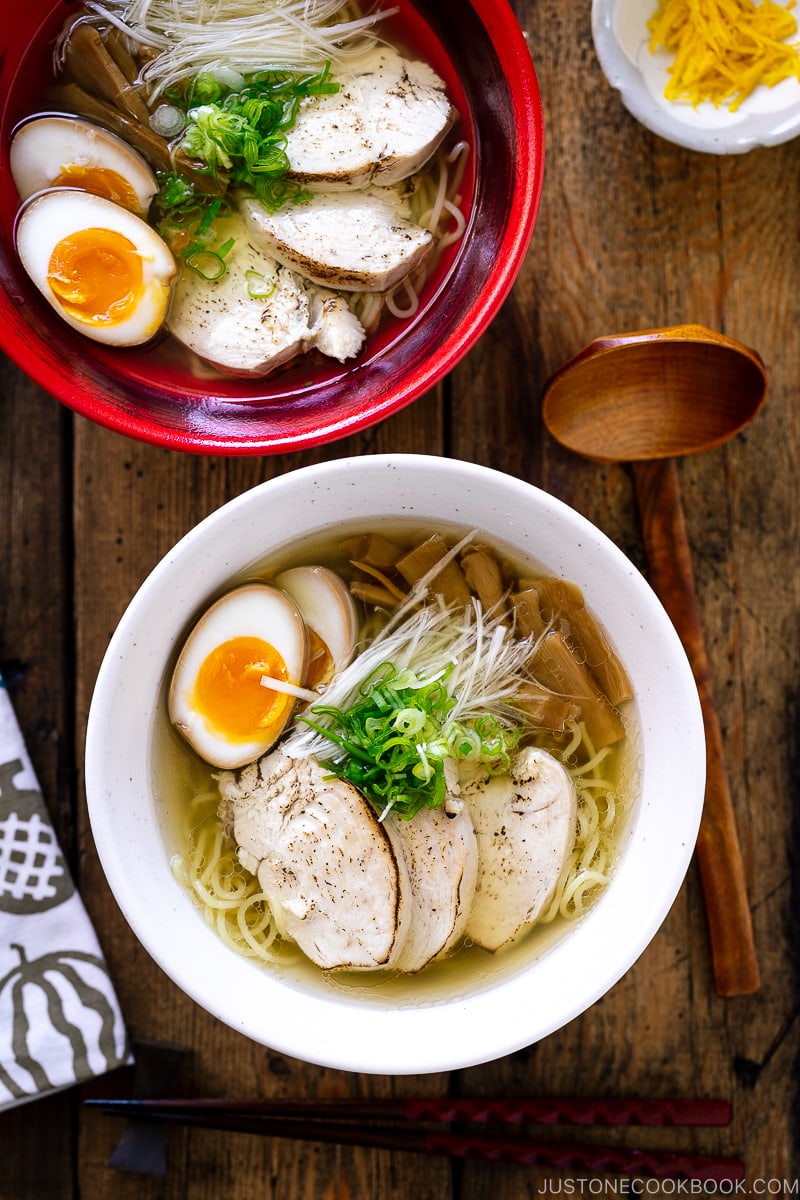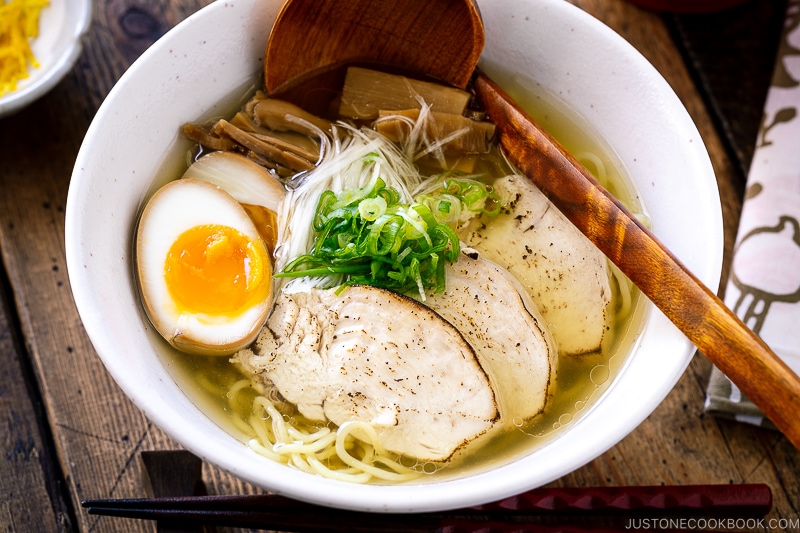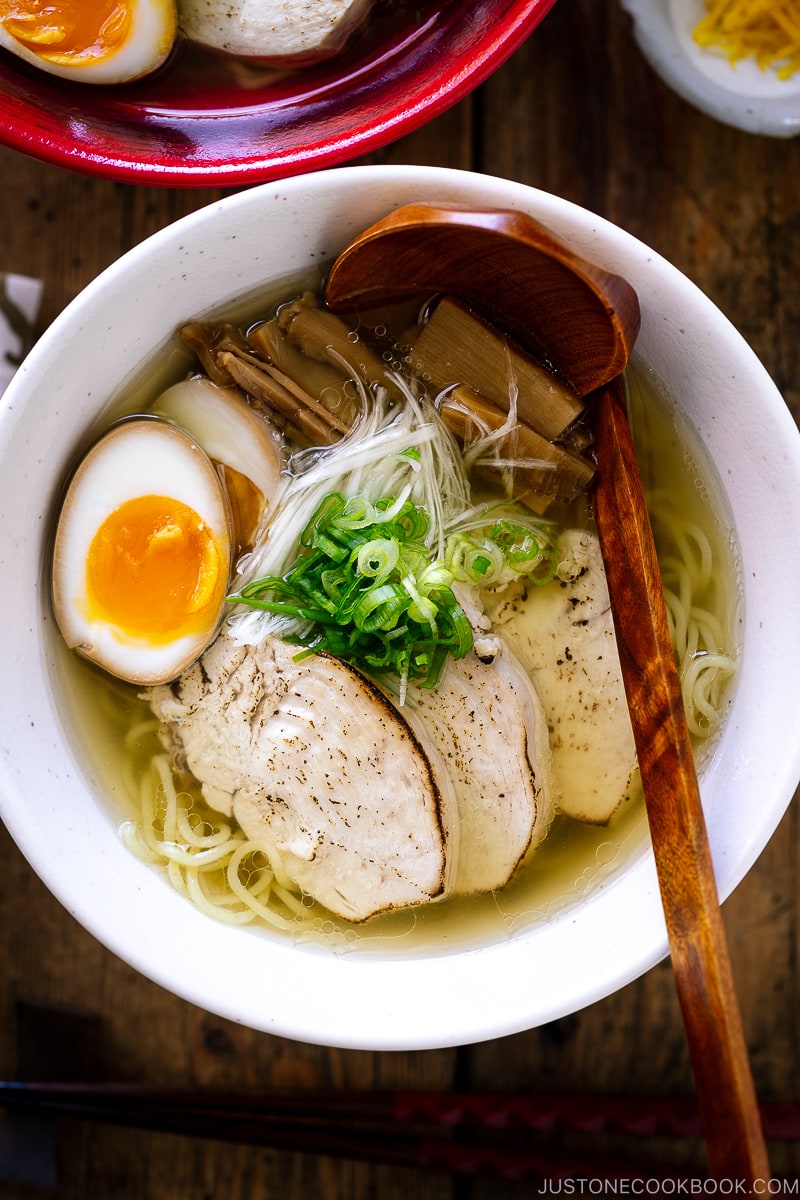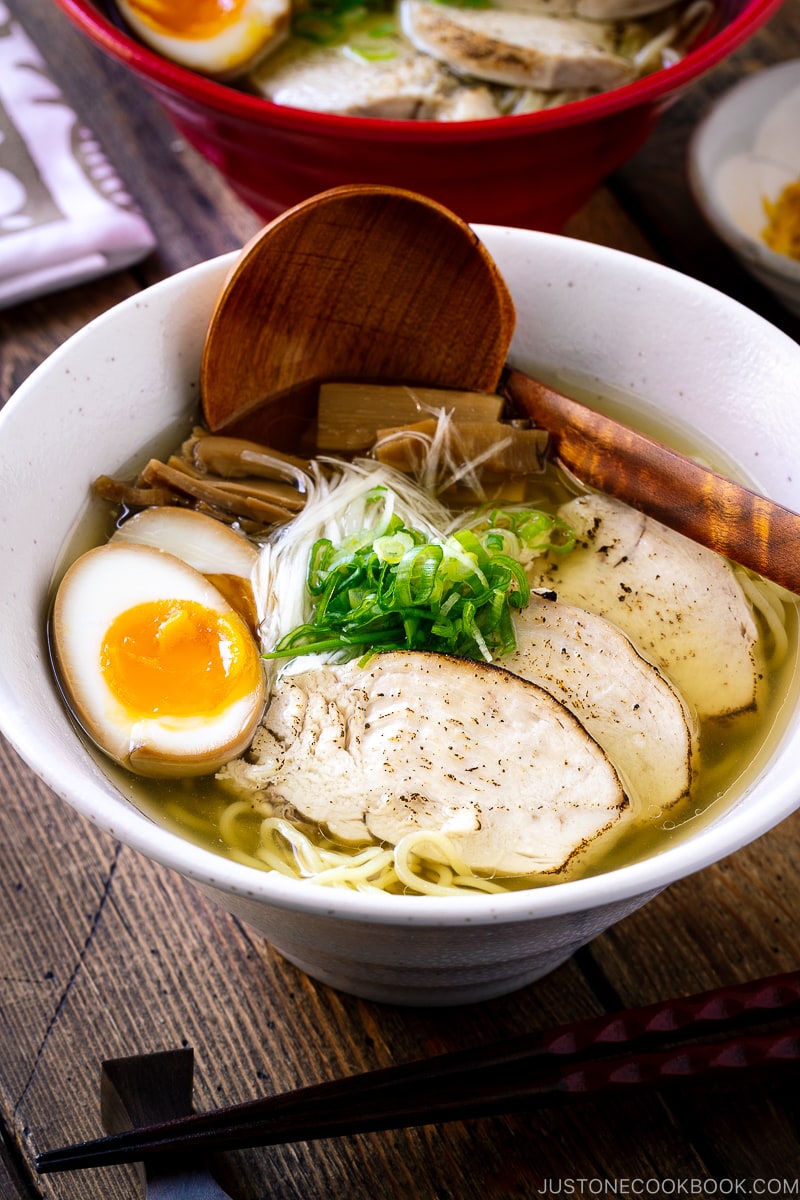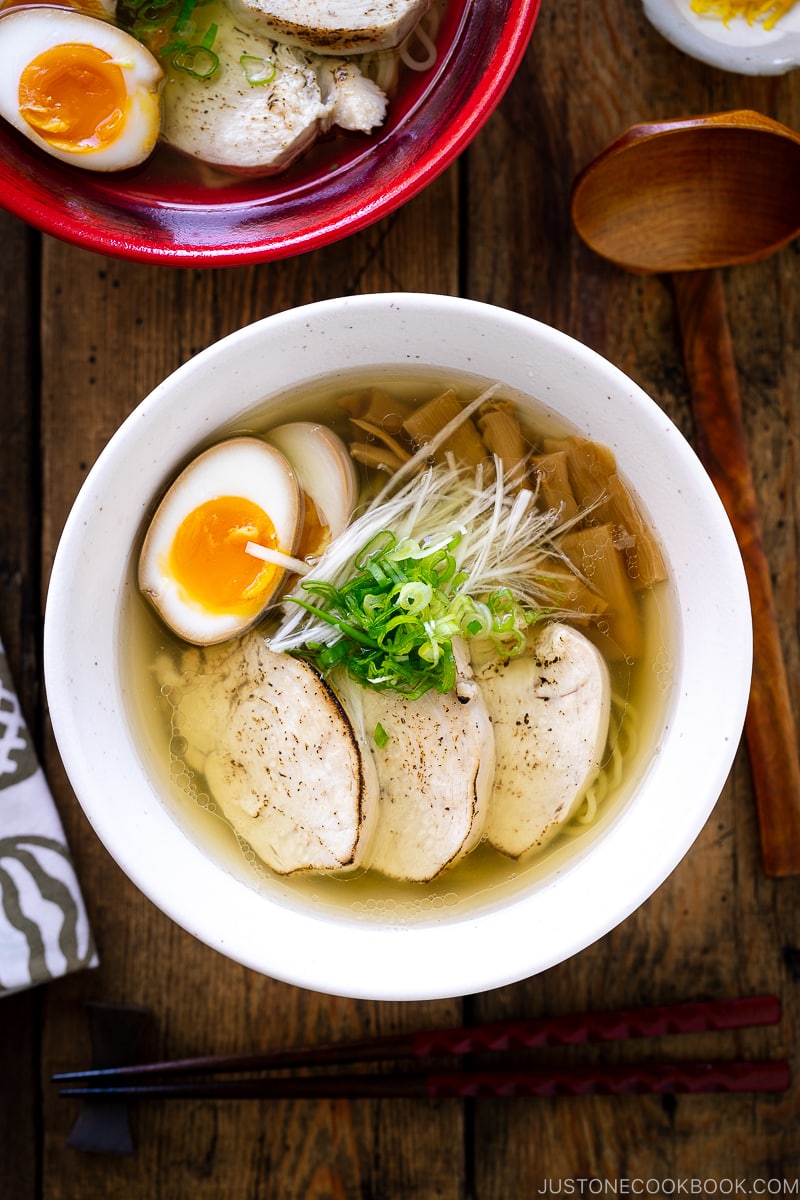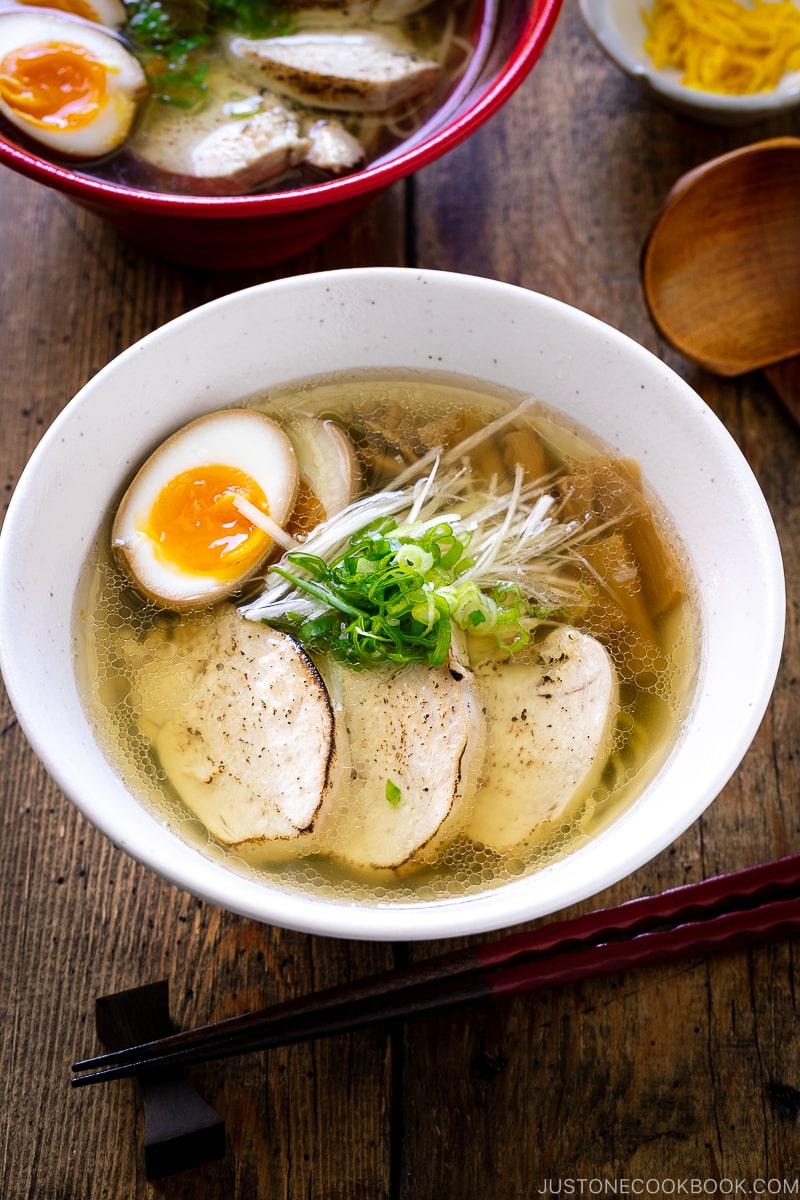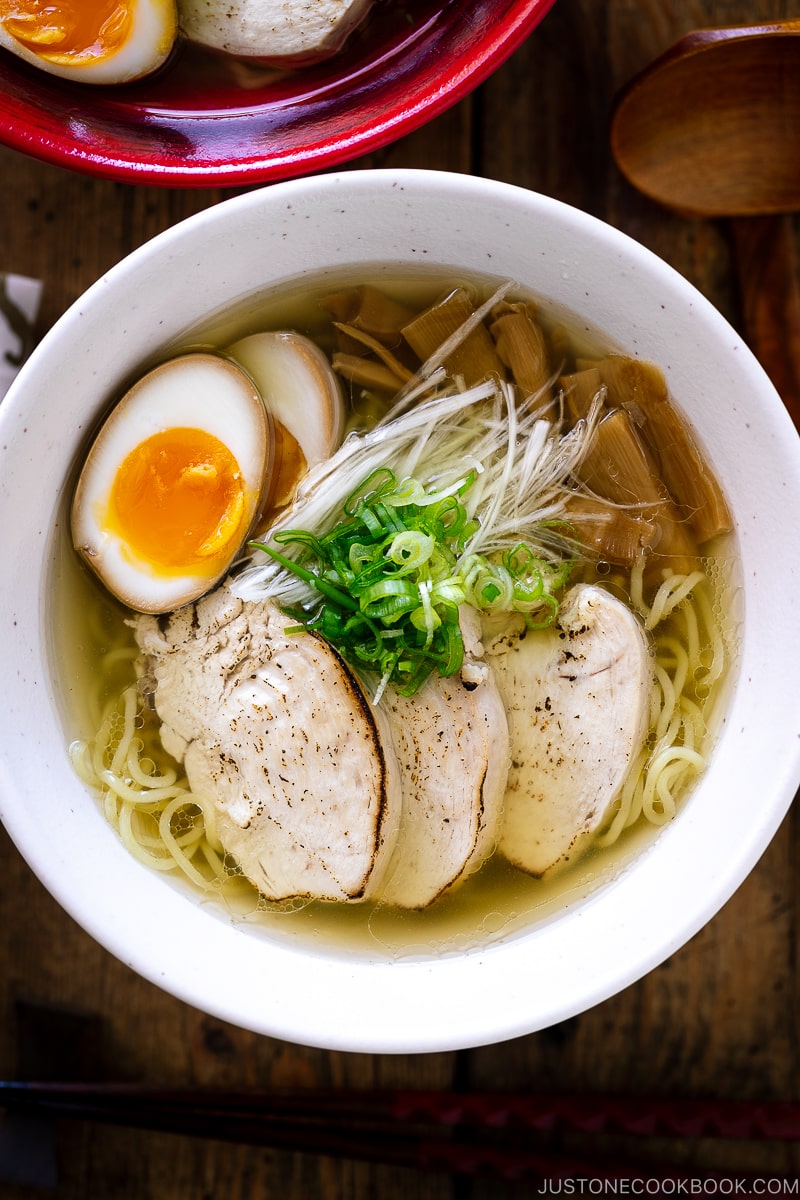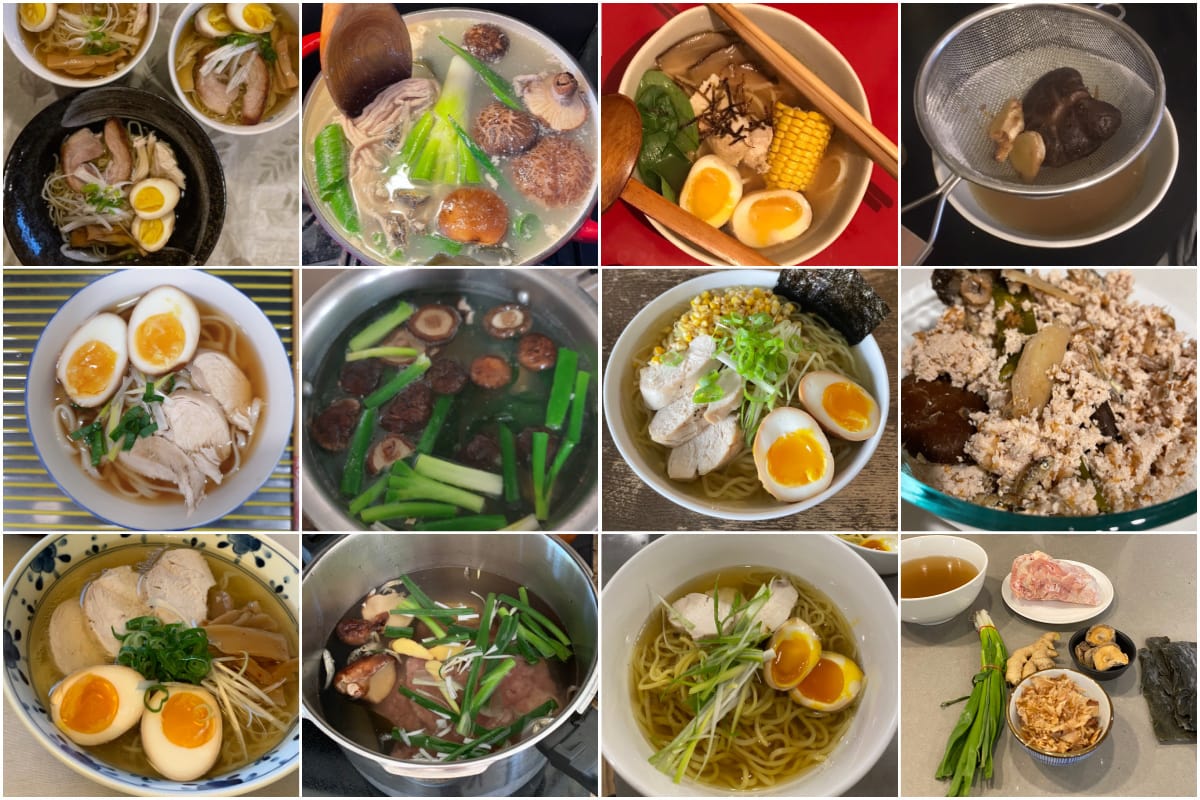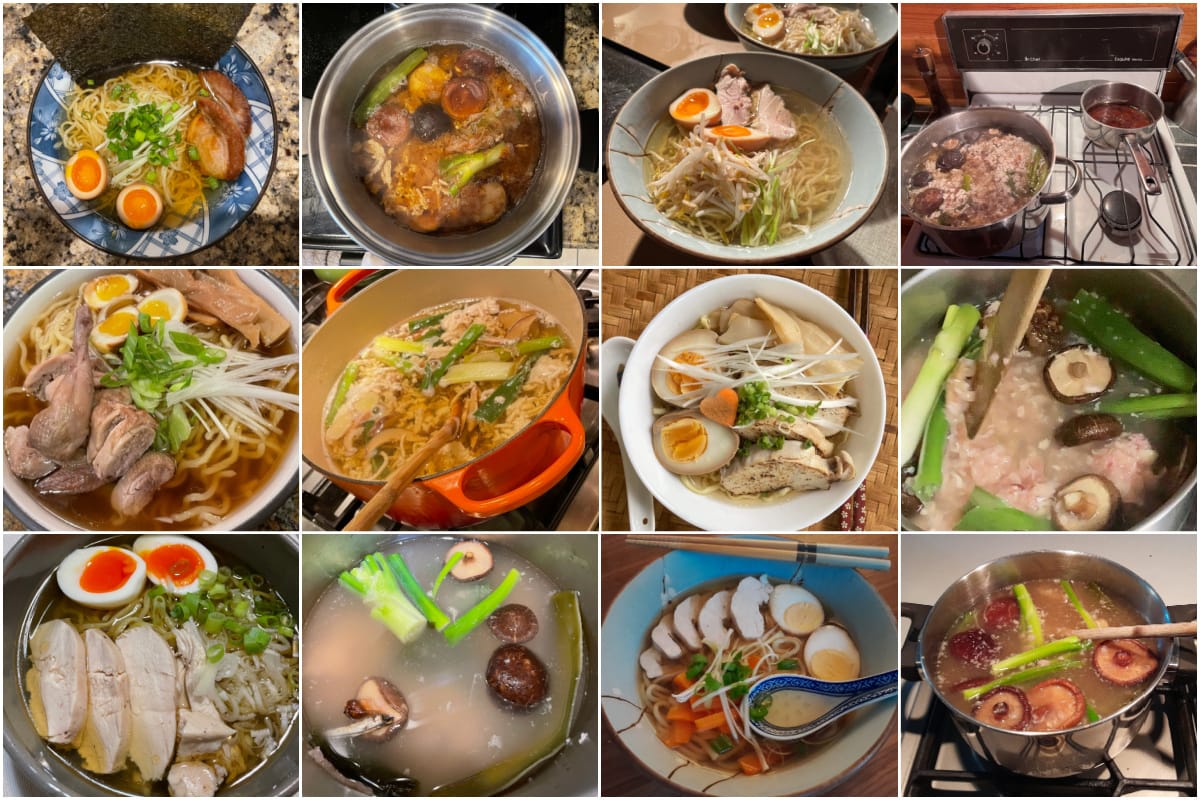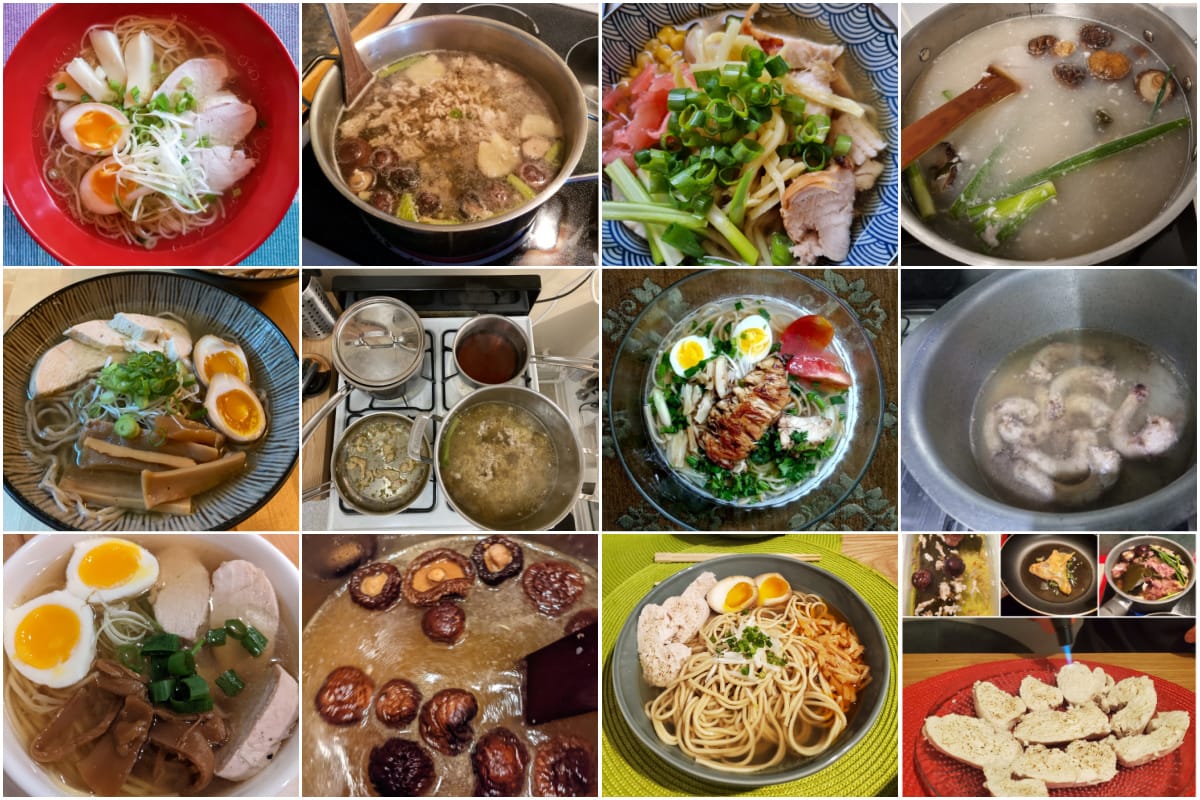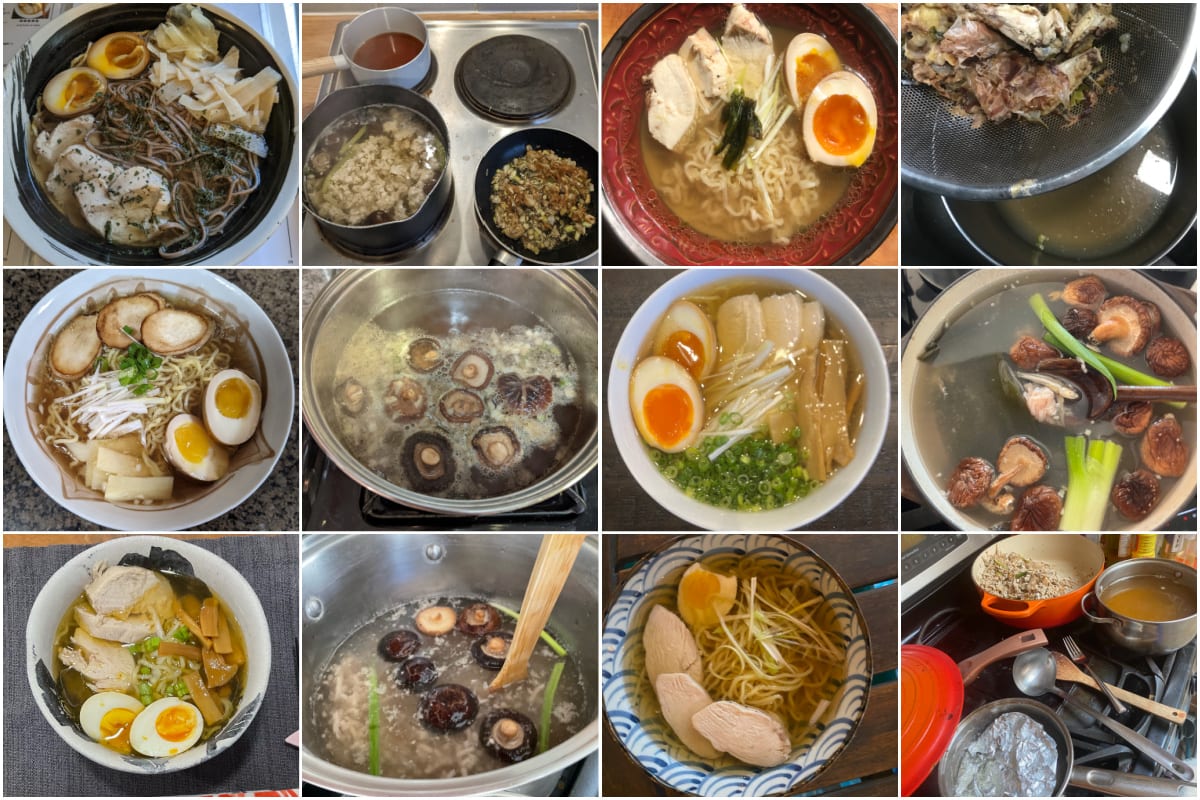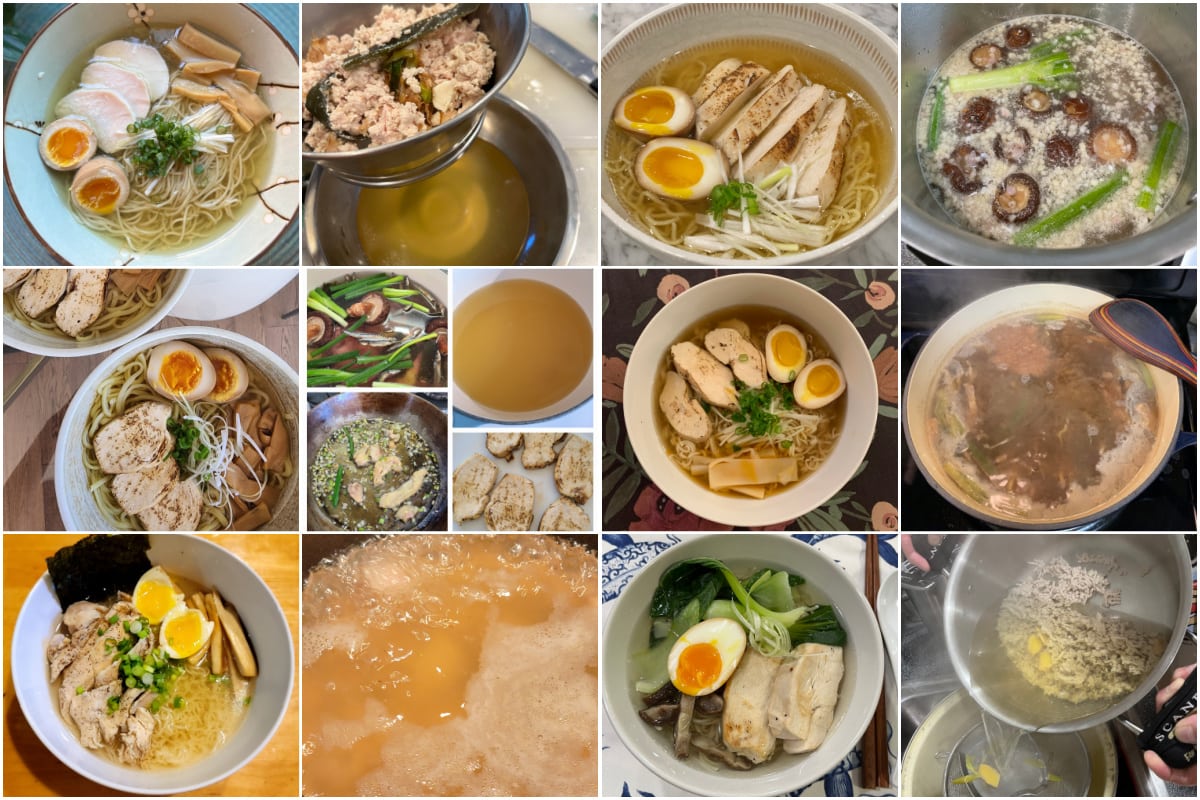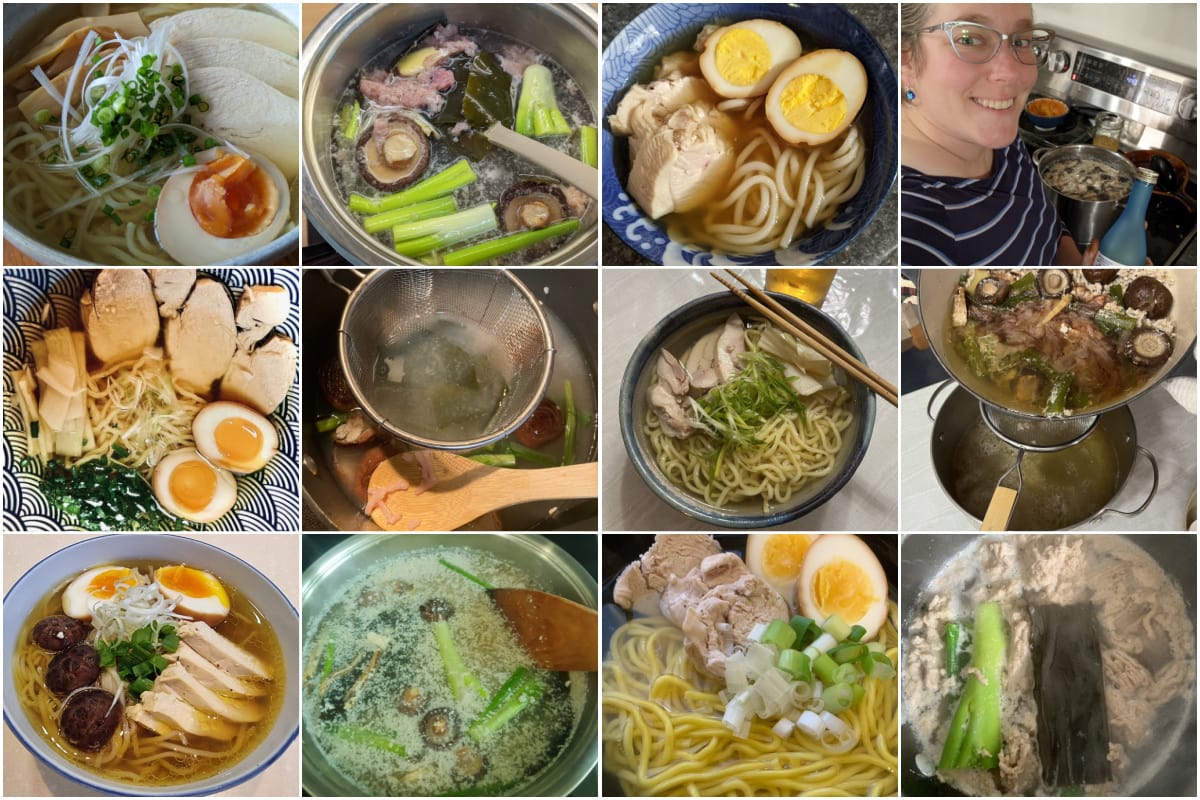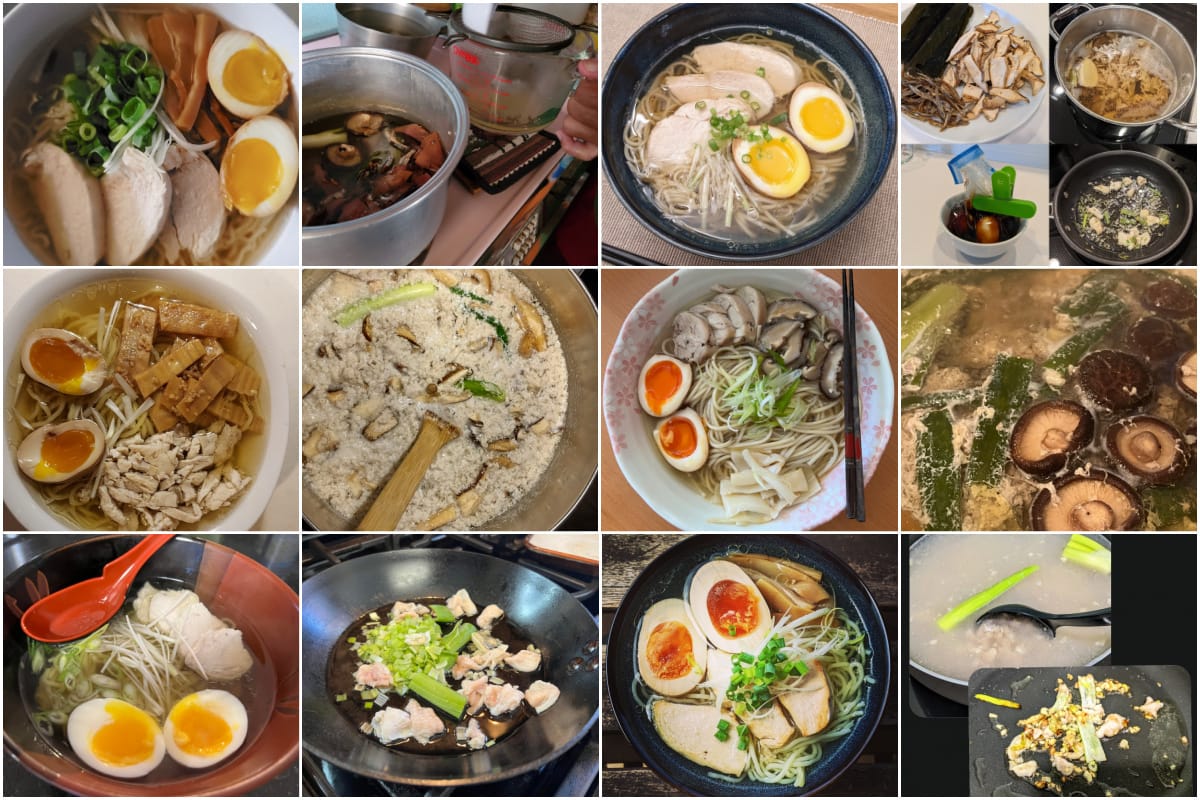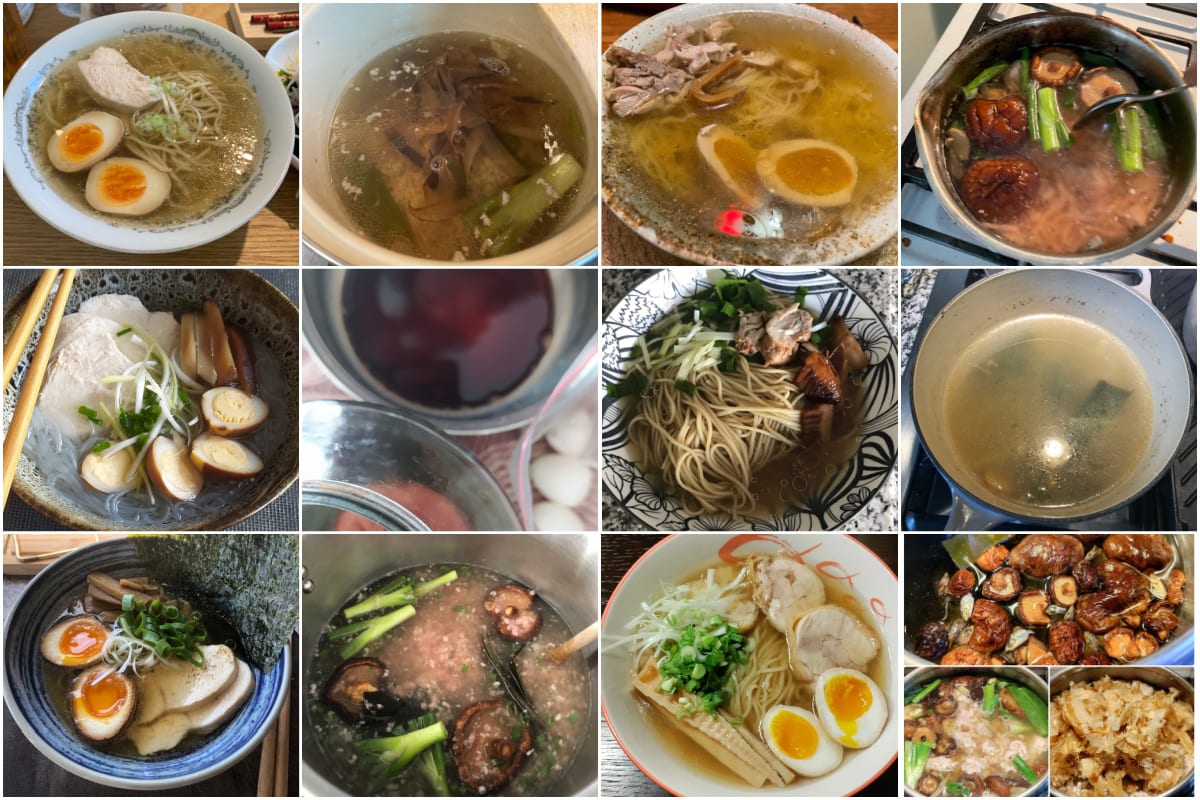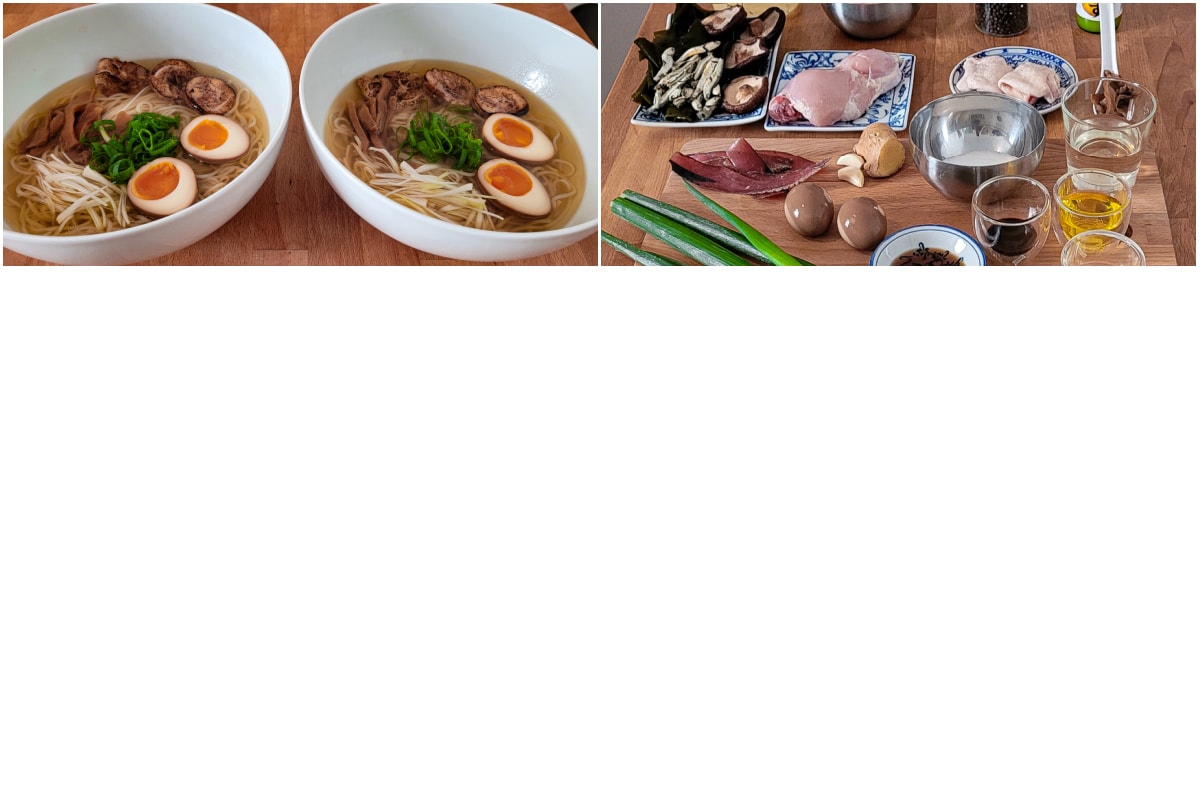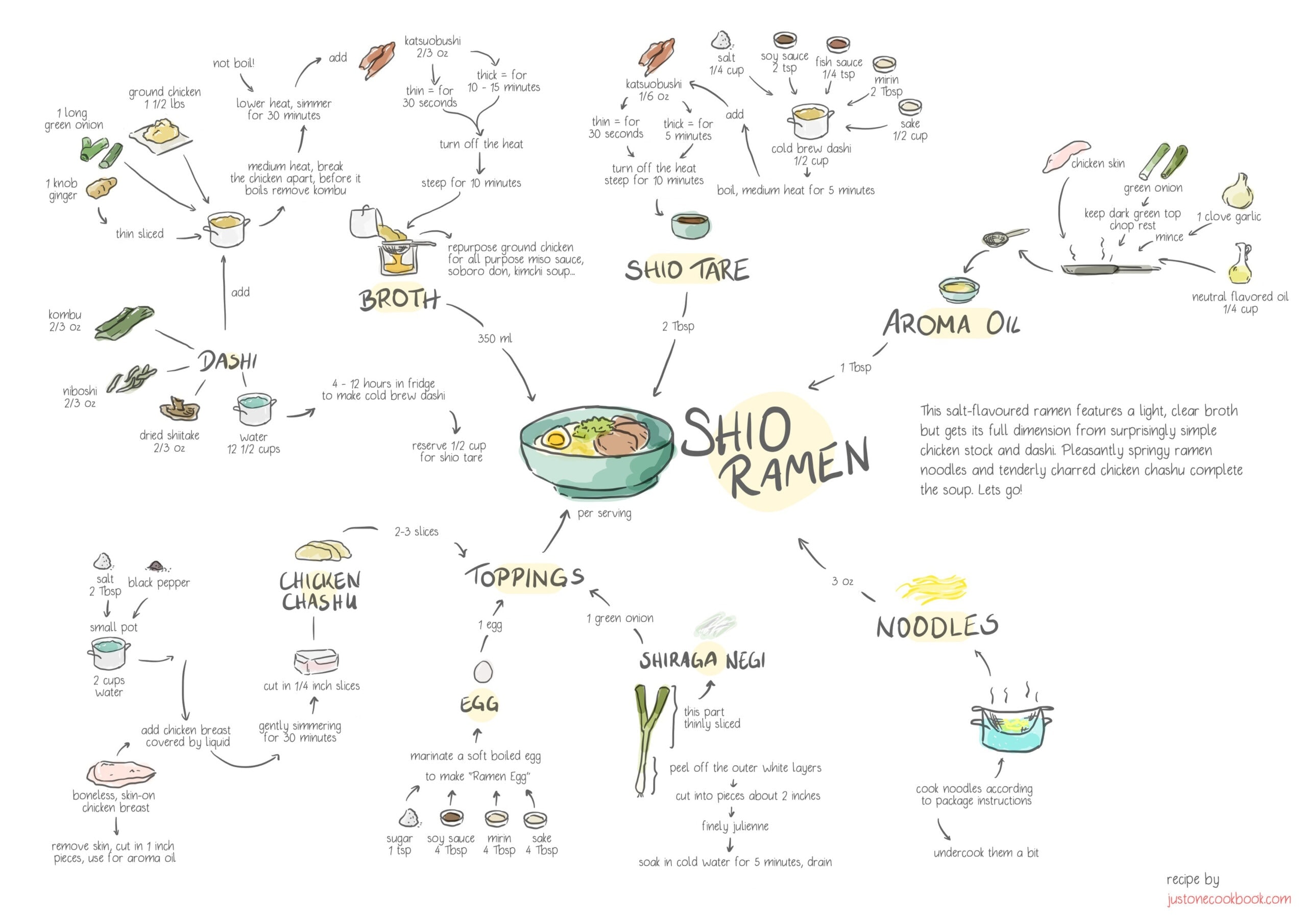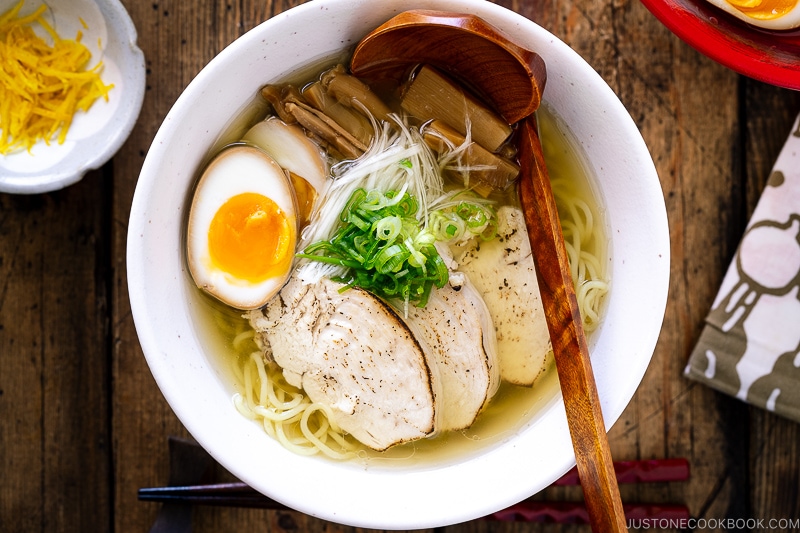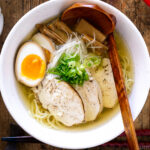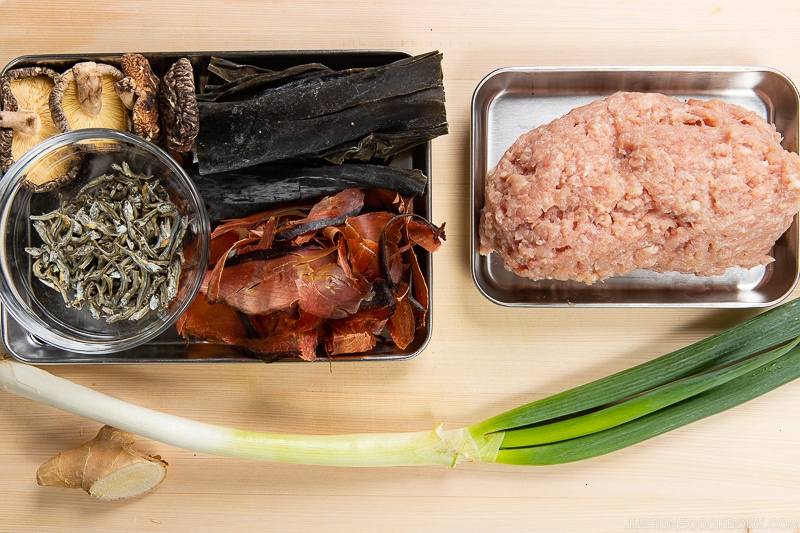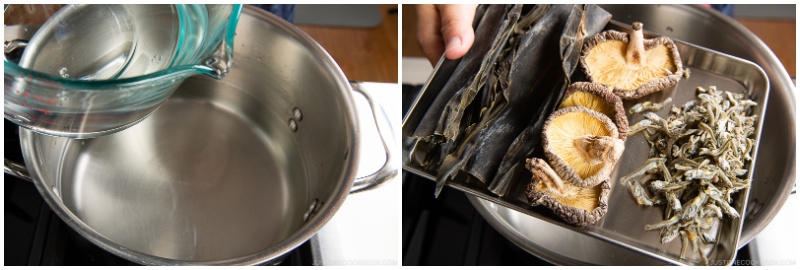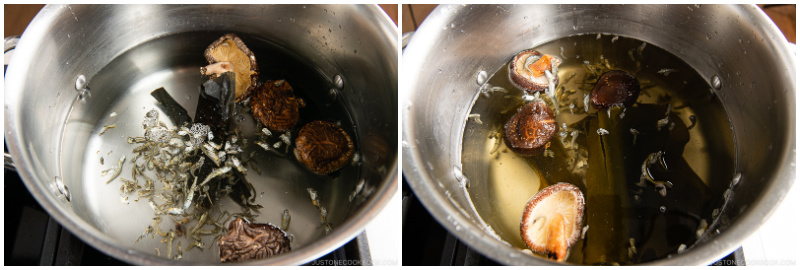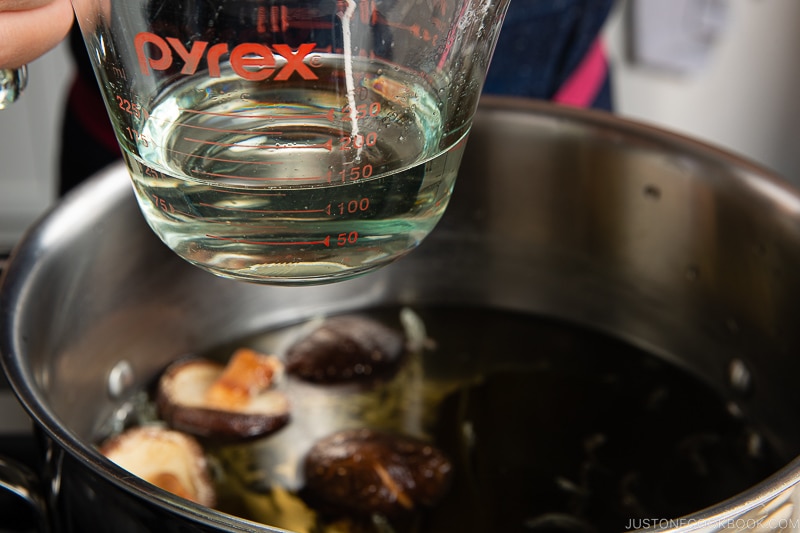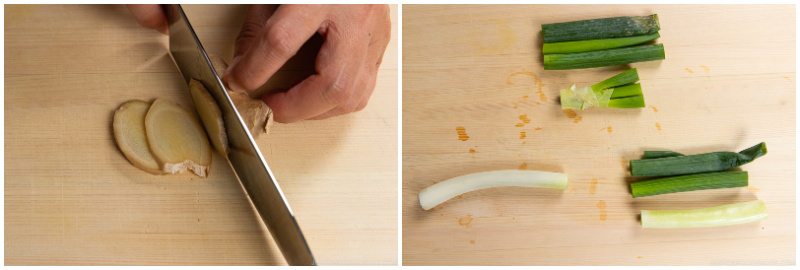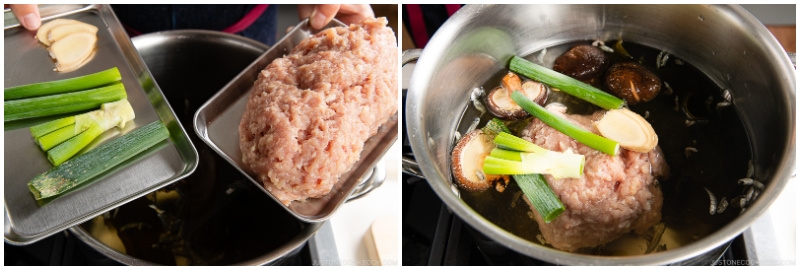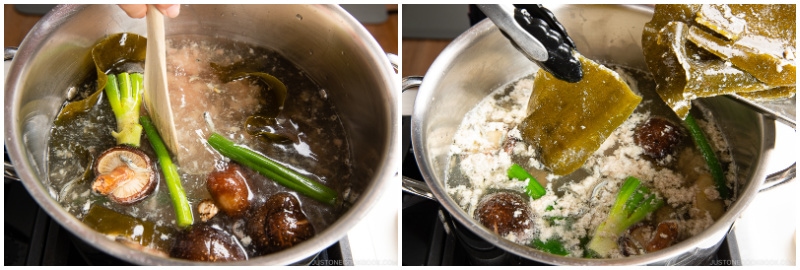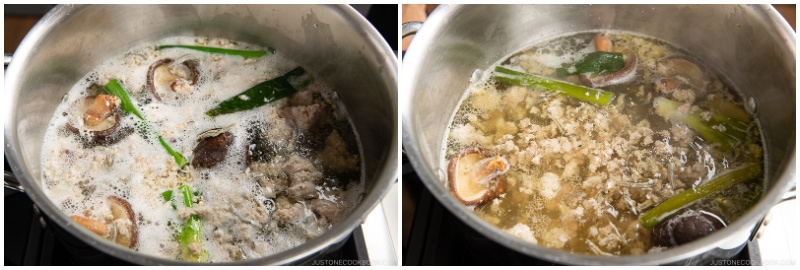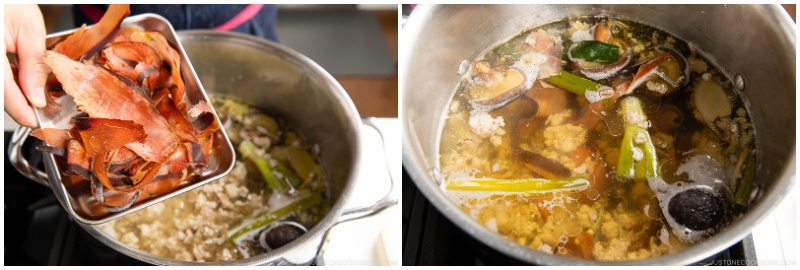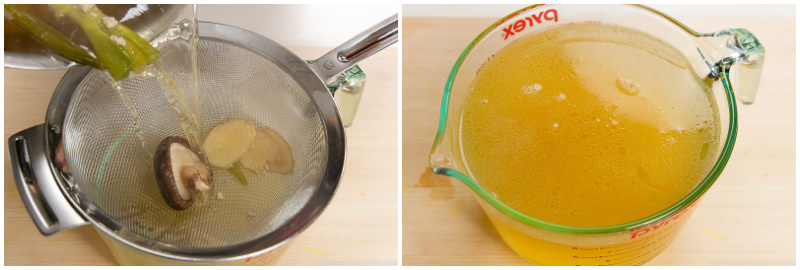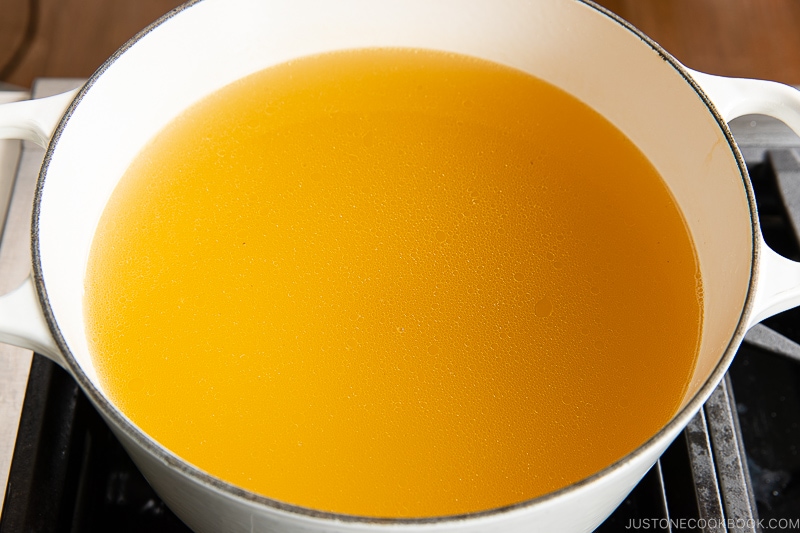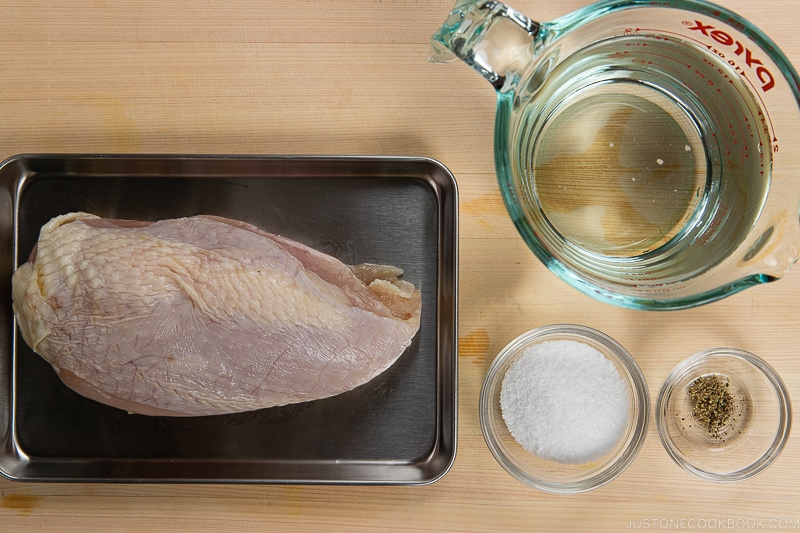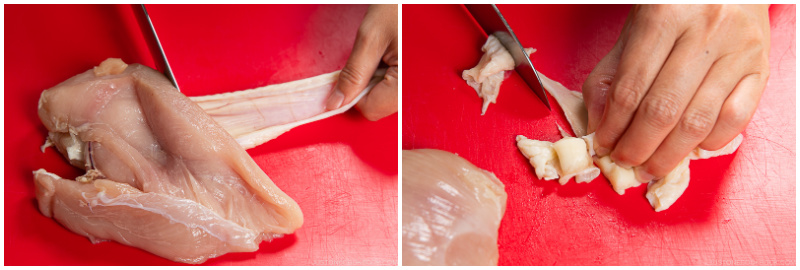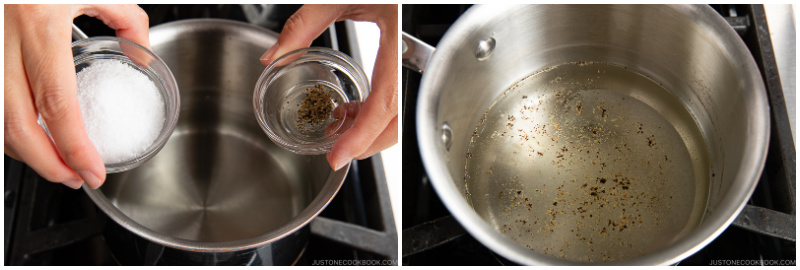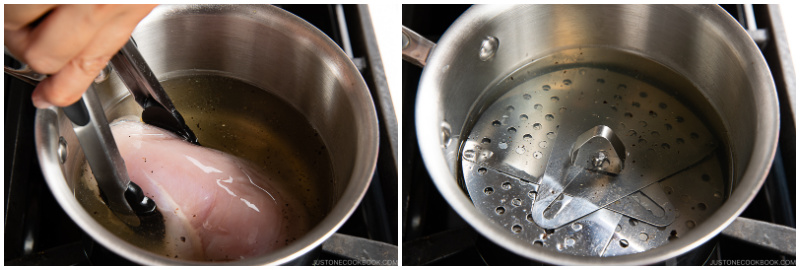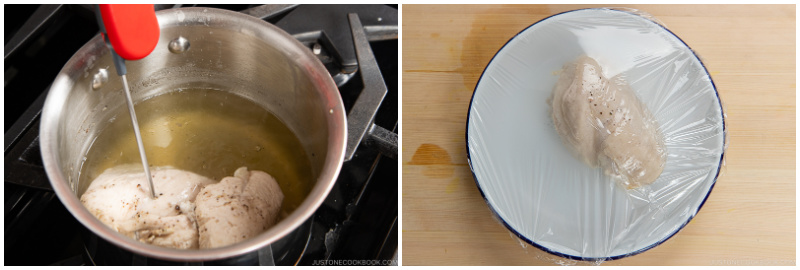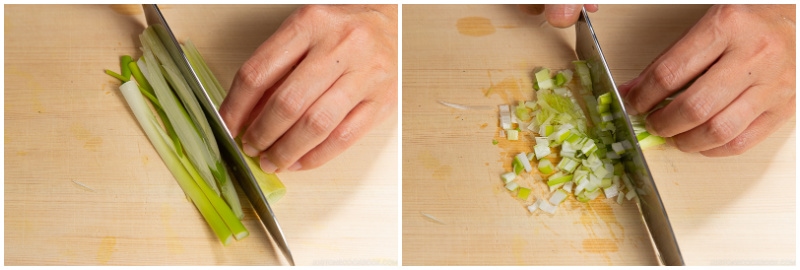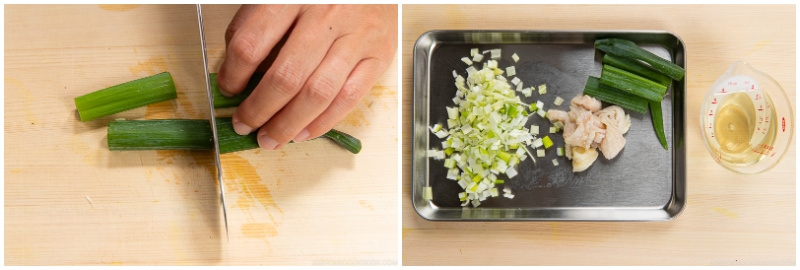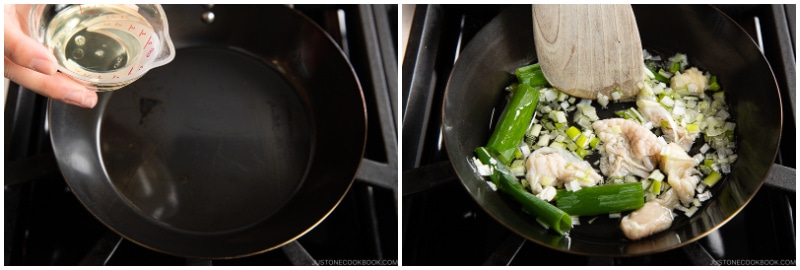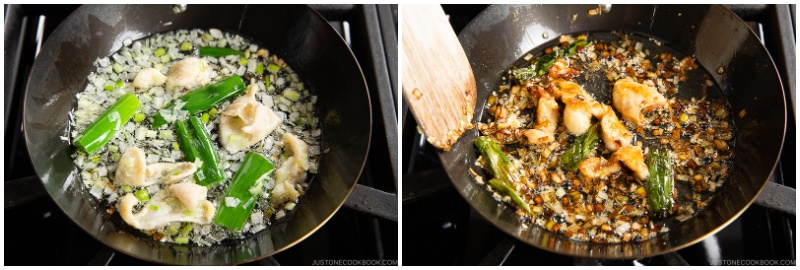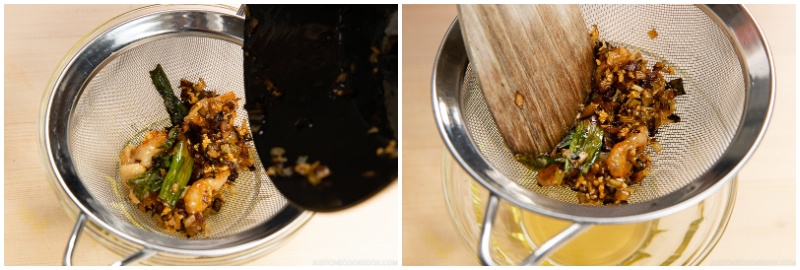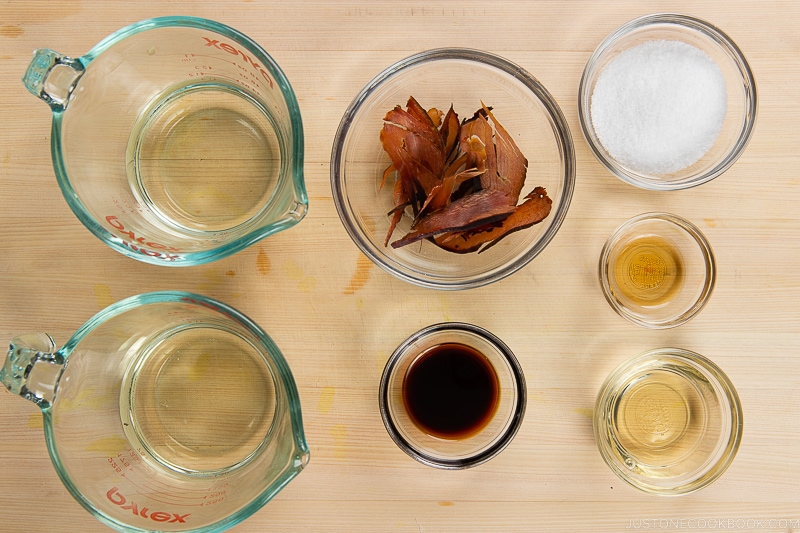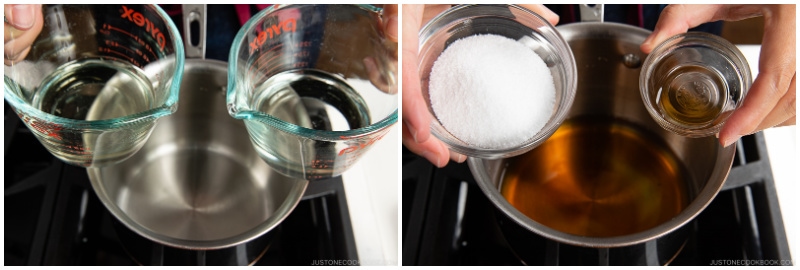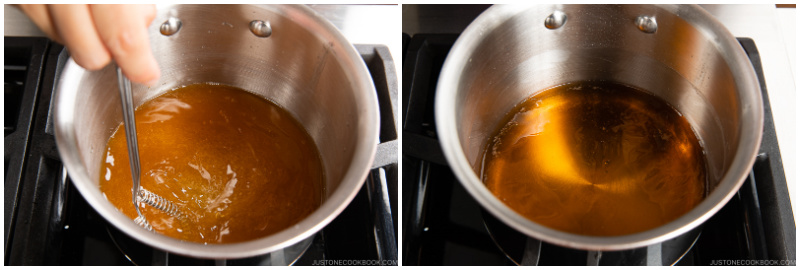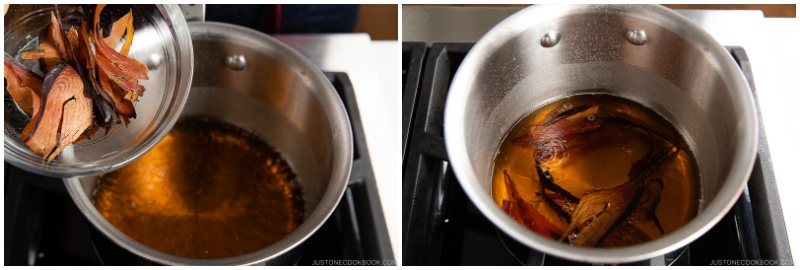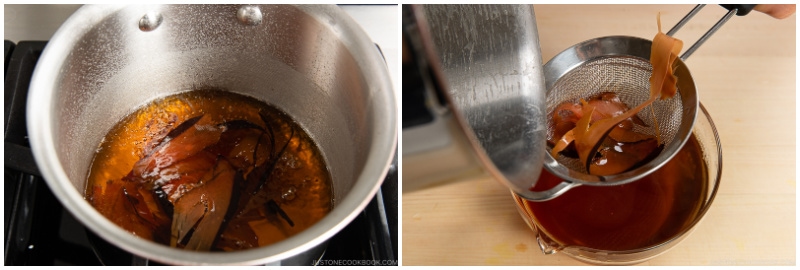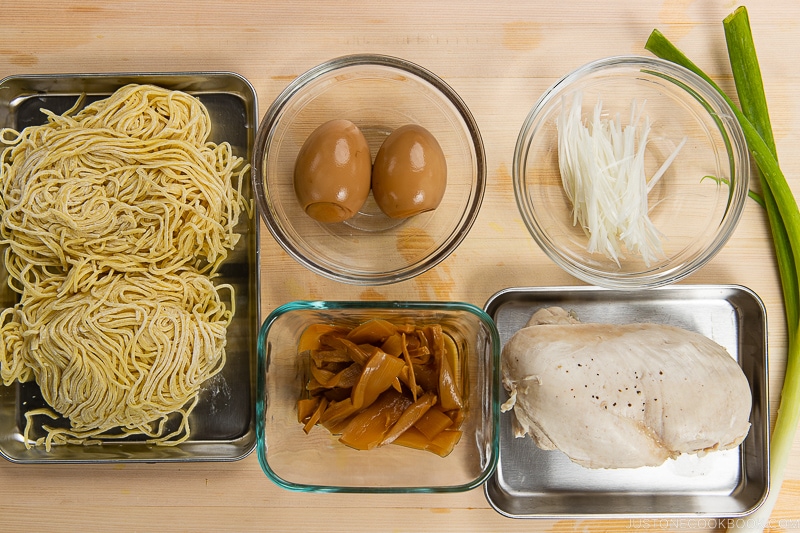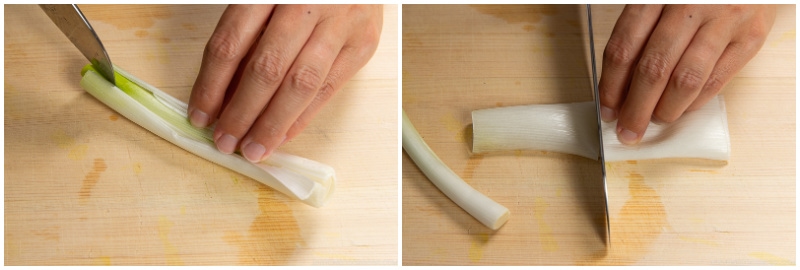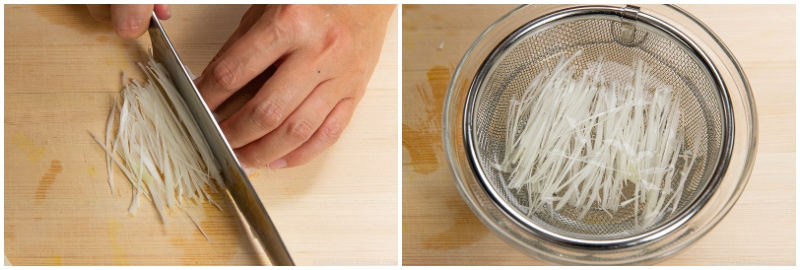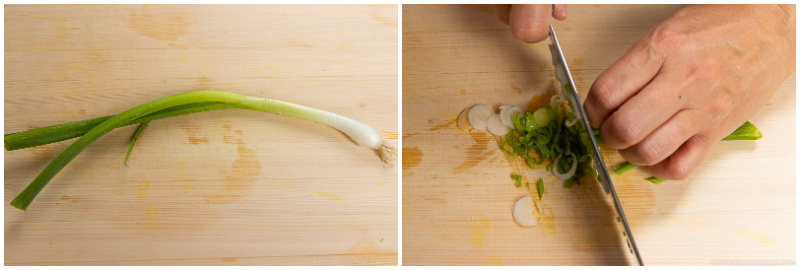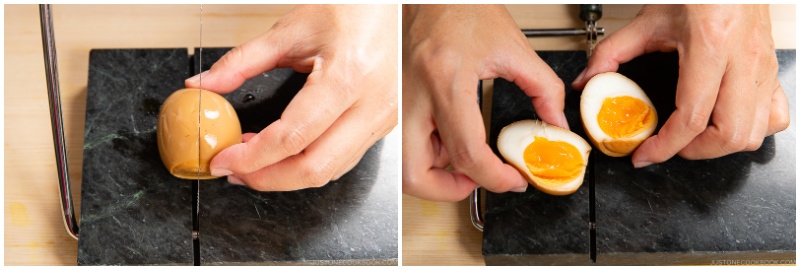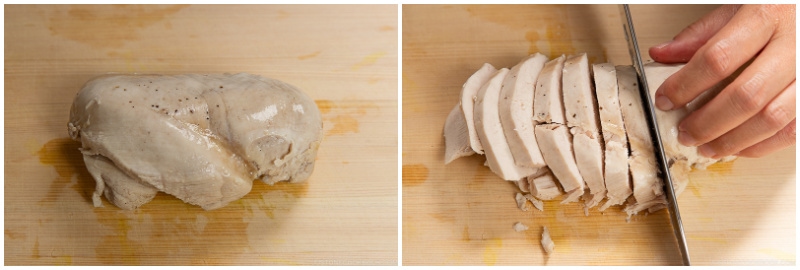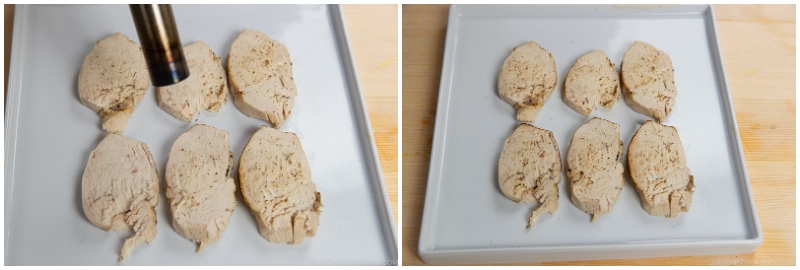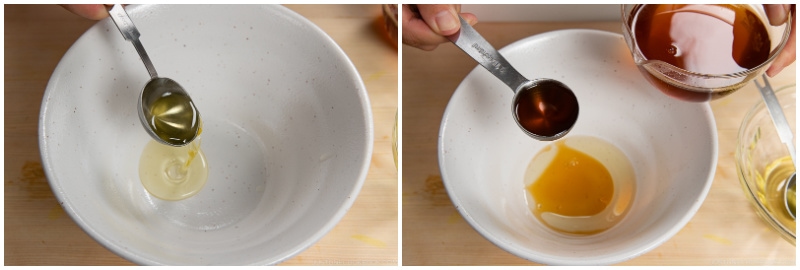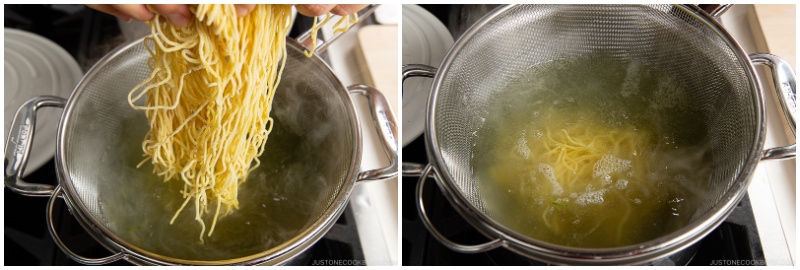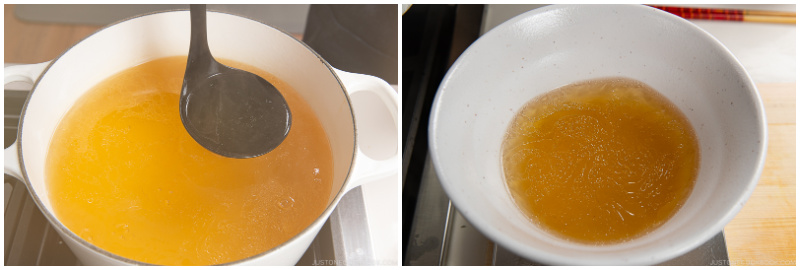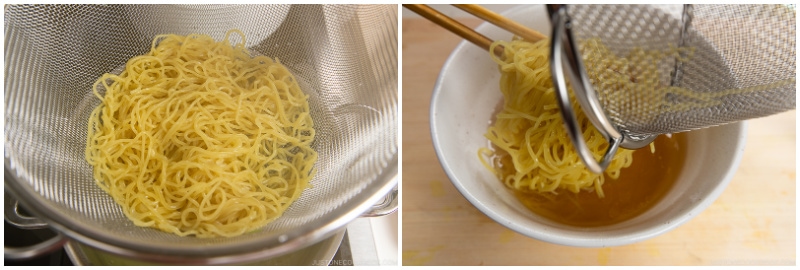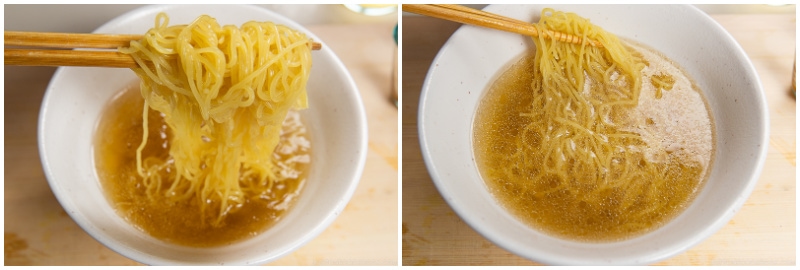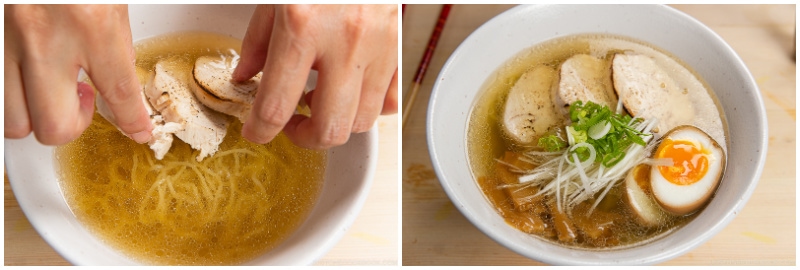I’ve shared a great number of ramen recipes on the blog and we’ve discussed passionately the world of ramen in Japan, but this has been a long time coming. Today, I am finally bringing you one of the classic—also most soulful and enigmatic—styles of ramen: Shio Ramen (塩ラーメン). This salt-flavored ramen features a light, clear broth but gets its full dimension from surprisingly simple chicken stock and dashi (Japanese soup stock). Pleasantly springy ramen noodles and tenderly charred chicken chashu complete the soup. Since this is a made-from-scratch recipe, it’s not meant to be instant but it’s easy enough for anyone to tackle. You’ll be rewarded at the end of the process. Let’s do this! Note: I also included vegetarian/vegan soup broth and topping ideas in the Recipe Card below.
This Shio Ramen Recipe Is For You If You…
love to make ramen at home but are not interested in spending all-day effort. enjoy a lighter, clean noodle soup that is deeply satisfying. are passionate about ramen (and noodle soup in general!)
What is Shio Ramen?
In case you’re not familiar, ramen can be grouped into 3 main broth flavors: salt, soy sauce, and miso.
Shio ramen (salt flavored) Shoyu ramen (soy sauce flavored) Miso ramen
Are you surprised that you don’t see “tonkotsu ramen”? Tonkotsu, or pork bone, is a broth base, not a flavor. Shio ramen is made with clear chicken broth as its base and topped with simple toppings such as bamboo shoots, sliced chashu (chicken or pork), and ramen eggs. Shio (塩) means salt in Japanese, which means much of the flavor base of this ramen draws on a salt seasoning. You can expect a much more delicate taste from shio ramen as compared to other ramen flavored with soy sauce or miso. As with the case for most ramen, a good broth dictates the result of your ramen.
Making Shio Ramen at Home
As my goal is to create authentic Japanese recipes that anyone can make at home, this ramen recipe is specifically formulated for home cooks. That does not mean we sacrifice the flavors at all! Let’s talk about the 5 components that make up ramen.
The Soup Broth
Typically, shio ramen broth is made with both dashi (Japanese soup stock) and chicken stock. Occasionally, both chicken and pork are used for the soup broth, but let’s keep it simple with chicken today. Instead of using chicken (or pork) bones, I discovered that we can make authentic ramen broth using ground chicken! This led me to a series of recipe testings between ramen broth made with bones and without bones. To my surprise, the flavor difference was genuinely not at all significant. This is great news for home cooks like me and you! With this short-cut approach, we are going to focus on the quality of each ingredient, making sure the final result of our shio ramen is just as delicate and flavorful.
Shio Tare
Every bowl of ramen is seasoned with a tare. Tare (タレ) translates to “sauce” and we’ll be using shio tare, a salt-flavored sauce for shio ramen. The complexity of the ramen soup is ultimately determined by how you can balance the tastes with the tare.
Aroma Oil
One of the important elements of ramen is aroma oil or what we call Koh-mi Abura (香味油). It plays an essential role when eating ramen: the first appetizing smell when a bowl of ramen is served, then, the aroma that passes through your nose when you drink the soup, and finally, the smell when you slurp the noodles. Without the aroma oil, ramen would be very bland. There are many different types of aroma oils, depending on the characteristics of the ramen, and some shops combine various ingredients to create their own aroma oil as their specialty. Here are some basic ones:
Chi-yu (鶏油, チー油) – aroma oil made with chicken skin Negi abura (ネギ油) – aroma oil made with Tokyo negi, ginger, and garlic La-yu (ラー油) – aroma oil made with togarashi peppers Ma-yu (マー油) – aroma oil made with garlic
For today’s recipe, I made the combination of chi-yu and negi abura with the ingredients I used (no waste!)
Noodles
Well-stocked Japanese and Asian grocery stores carry fresh ramen noodles, and that would be my choice. You can also order fresh ramen noodles from Sun Noodles online.
Toppings
This is where you can be flexible and creative! For this recipe, I topped my shio ramen with homemade chicken chashu (recipe included), ramen egg, shiraga negi (white part of Tokyo negi that’s julienned), menma (seasoned bamboo shoot), and chopped scallions. You can use pork chashu, sautéed mushrooms, or seasoned tofu. I’d say keep the toppings simple as the soup is delicate. For Yuzu Shio Ramen (柚子塩ラーメン), I top the ramen with julienned yuzu zest (this is how I store yuzu zest) and drizzle some yuzu extract. It’s especially perfect for summertime as it tastes refreshing.
How to Make Shio Ramen
Ingredients You’ll Need
For the dashi (Japanese soup stock) – kombu, dried shiitake mushrooms, dried anchovies, and dried bonito flakes. For the ramen broth – ground chicken, ginger, garlic, and Tokyo negi or green onions. For chicken chashu – boneless, skin-on chicken breast (use skin for aromatic oil). For shio tare – sake, mirin, soy sauce, fish sauce, salt. For aromatic oil – chicken skin (from the breast) and Tokyo negi For ramen toppings of your choice – Ramen Eggs, menma (seasoned bamboo shoot), chopped scallions.
Overview: Cooking Steps
Important Tips on Making Delicious Shio Ramen
Simmer the stock, do not boil. When you’re making stock or soup, you want to simmer. This helps keep the stock cleaner. Boiling induces a faster breakdown of proteins and causes them to render fat that emulsifies and incorporates scums into the stock, leaving you with a cloudier end product. So keep it simmered at all times! Not all salt brands are alike, so check the taste. Many American chefs and recipes use Diamond Crystal (DC) brand kosher salt as their standard salt, and so do I. Different types of salt have different-sized granules, so the weight of salt in one tablespoon can vary. In general, DC kosher salt requires about twice the amount by volume as table salt (DC kosher salt is 10 g/tablespoon and table salt is 20 g/tablespoon). For accuracy, it’s best to measure by weight. You may experience some trial and error until you figure out the right adjustment based on what brand you use. Use thick shavings of katsuobushi for the ramen broth. The thick shavings (atsukezuri 厚削り) are often used for making dashi (Japanese soup stock), while the thinner shavings (hanakatsuo 花かつお) can be used as a topping. When making dashi with thick shavings, you can simmer it for 15 minutes, drawing out the umami and strong flavors into the stock. This is especially helpful when you use other strong seasonings and flavors, such as chicken stock. If you use thin shavings, you would let them steep in a simmering stock for just 30 seconds, and turn off the heat to let it steep. This is because if the water is boiled while the bonito flakes are added, it will quickly give an off-taste. Also, thick shavings are much easier to use as they won’t cloud up the stock and they can be picked up easily after being used. Don’t overcook the chicken chashu. Guessing the chicken’s doneness is difficult and it is possible to overcook it, resulting in dry meat (especially the chicken breast size can be different in size and weight). Having an instant-read thermometer (I use Thermapen) takes the guesswork out of testing the doneness of the chicken. As soon as the internal temperature of the chicken hits 165ºF (74ºC), turn off the heat and let it cool.
Can I make a vegan/vegetarian version?
The classic Shio Ramen requires both seafood-based dashi and chicken stock. Therefore, omitting those ingredients will not make this recipe an authentic recipe. However, for those who still want to try this recipe without using chicken, dried anchovies, and dried bonito flakes, I have created a section for the Vegetarian Ramen Soup. By omitting important ingredients, the flavor of the vegetarian ramen broth will be different and it does not taste like the classic Shio Ramen; nevertheless, I hope you will still enjoy this ramen.
Can we skip or substitute some ingredients in the recipe?
Please read the recipe card for more information. I highly encourage you to follow my recipe as closely as possible for the best result.
Readers’ Shio Ramen
Shio Ramen was the challenge recipe for JOC Cooking Challenge September 2022. Check out the delicious shio ramen created by JOC readers!
More Ramen Recipes to Try
Miso Ramen Spicy Shoyu Ramen Vegetarian Ramen (Soy Milk Ramen) Tsukemen (Dipping Ramen Noodle) Hiyashi Chuka (Cold Ramen)
Wish to learn more about Japanese cooking? Sign up for our free newsletter to receive cooking tips & recipe updates! And stay in touch with me on Facebook, Pinterest, YouTube, and Instagram.
